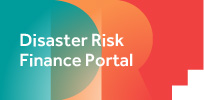
TV still: Tonga Broadcasting Commission
In January of 2014, Tropical Cyclone Ian struck the country, causing particularly widespread damage and destruction on the islands of Ha’apai and Vava’u. The total ground-up loss for this event was estimated at T$90 million (US$50.3 million), with T$20.5 million (US$11.5 million) attributed to emergency loss (PCRAFI 2014). The post-disaster economic assessment conducted following Tropical Cyclone Ian estimated the combined physical damage and economic loss from this event to be T$90 million (US$50.3 million), equivalent to 11 percent of Tonga’s gross domestic product. Part of the post-disaster relief was sourced from the Emergency Fund which was established in 2008 through Pacific Catastrophe Risk Assessment and Financing Initiative (PCRAFI). The PCRAFI Emergency Fund has an annual appropriation up to a maximum of T$5 million (US$2.79 million) that is allocated to the fund in any fiscal year. Access to the emergency fund via the national emergency operations account was granted due to the early warning system and following statement of emergency issued the day before Tropical Cyclone Ian made landfall on January 10, 2014. Ultimately, this measure allowed the Tongan government to receive T$2.3 million (US$1.27 million) from its catastrophe risk insurance policy.

Twitter: @ProudTongans
The catastrophic regional risk pool of PCRAFI offers parametric insurance designed to cover emergency losses, which is estimated using both a modeled representation of the event based on hazard parameters and a calculation of total modeled physical damage. Unlike a conventional insurance scheme, where a payout would be assessed against actual incurred costs, this scheme pays out on the results of a model. The advantage of this approach is that it results in a much faster payout and thus more expedient response measures can be undertaken. Countries can choose between three layers of coverage—low, medium, and high—depending on the frequency of events. The lower layer covers events with a return period of 1 in 10 years, which are more frequent but less severe events. The medium layer covers events with a 1 in 15 year return period, while the higher layer covers less frequent but more severe events, or those with a return period of 1 in 20 years. However, ultimately member countries may request that a more customized option be developed for them specifically.

Photo: Semisi Sika via @ProudTongans, Twitter
In this specific case, access to the fund facilitated the purchase of rations and electrical supplies and ensured that enough stock was available for mobilization immediately after the event. It is worth mentioning that fuel distribution, travel and freight accounted for 39 percent of initial relief expenditures from the emergency fund, demonstrating how costly it can be to access the outer islands of SIDS when facilitating disaster response efforts.
While access to funds is different for each country, the insurance payment is triggered by confirmation of the parametric insurable event.


